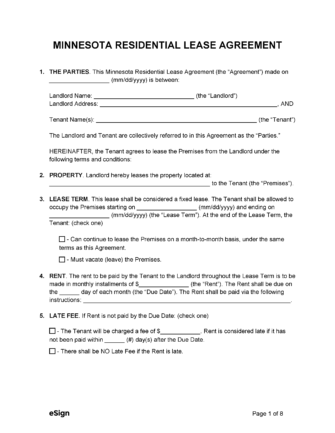Required Disclosures (5)
- Financial Distress – If a landlord receives a contract for deed cancellation, notice of mortgage foreclosure sale, or any summons and complaint related to foreclosure, they must inform potential tenants before renting the property.[1]
- Landlord/Manager Information – The names and addresses of the landlord and any person authorized to manage the premises or receive and give notices must be provided to the tenant.[2]
- Lead-Based Paint Disclosure (PDF) – Federal law requires landlords of property built before 1978 to inform tenants that they may be exposed to lead-based paint.[3]
- Notice of Tenants’ Rights – Landlords must post a notice in a conspicuous place on the property stating that they can request this statement from the attorney general.[4]
- Outstanding Inspection Orders – If an inspector has issued a citation for code violations regarding health and safety, the landlord must provide the tenant with a copy of the orders. Inspection orders for violations not affecting health and safety can be posted in a conspicuous place on the property.[5]
Security Deposits
- Maximum Amount ($) – No statutory limit.
- Returning to Tenant – 3 weeks.[6]
Rent Grace Period
There is no legally required grace period for rent payments in Minnesota.
Landlord Resources
- Landlord and Tenant – Chapter 504B
- Handbook (Guide) – Landlords and Tenants Rights and Responsibilities

